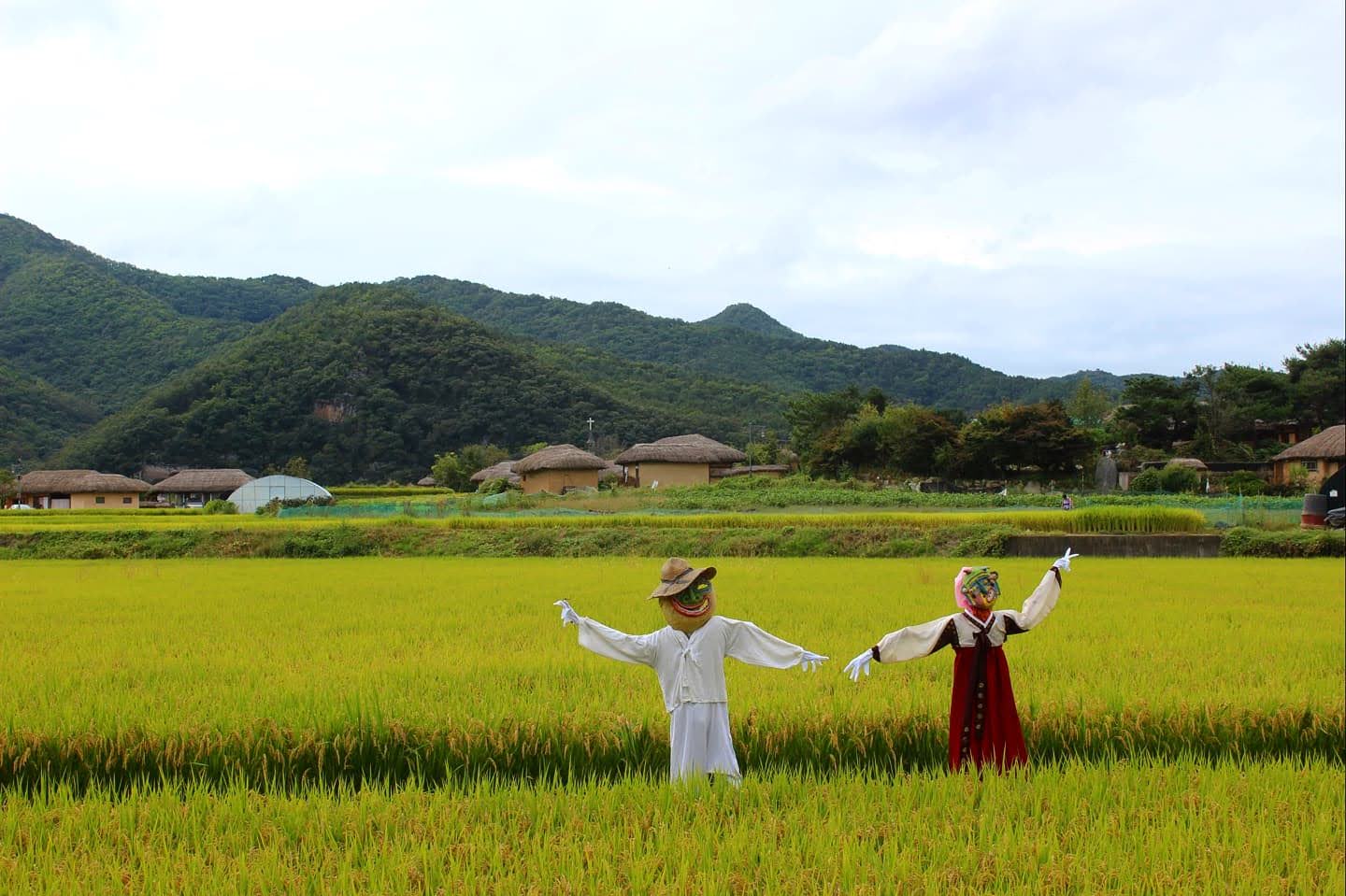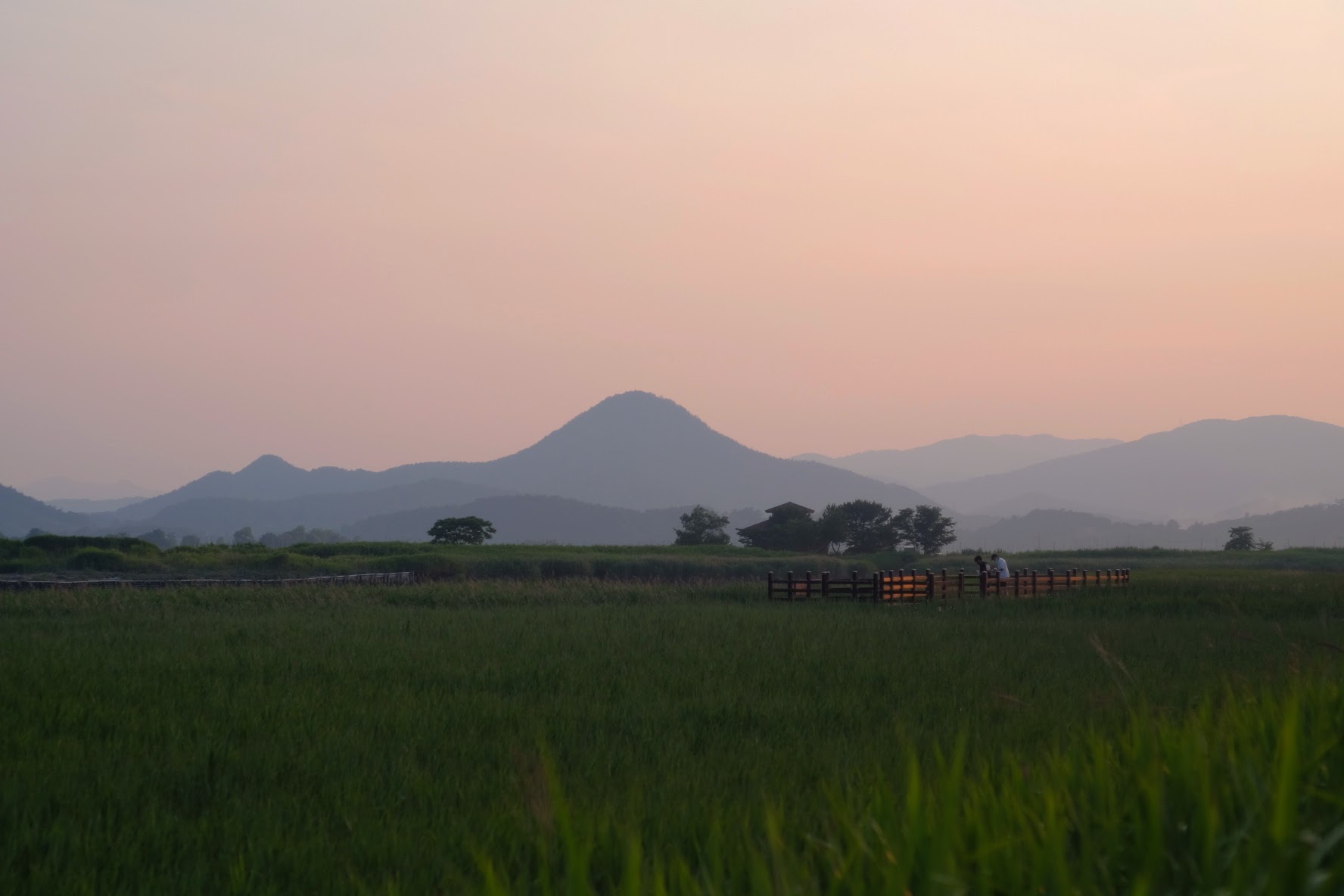by Julia Zorc, ETA ’20

Along the Mugunghwa train line between Mokpo and Busan is a station with no name.
When I have dinner with the Lim family, it is Tae Hee, my closest confidant among them, who tells me about it. I ask her for a more exact location on the line, but she doesn’t know. Her smile crinkles her face and she seems somewhere between a mother and a mischievous child. “It’s like a little legend. Maybe not true. But friends say they saw it.”
She refills my glass and then calls out to her daughter, asking her to go to the corner store for some ice cream. There’s something I find romantic about this train station, but I attribute the mystery to a sort of clerical error that happens frequently here, like when a new address is put on a collapsed house.
Tae Hee doesn’t have to mention it again. She knows the seed has already been planted. She knows that I like these kinds of out-of-the-way places, where few other foreigners have bothered to go. Places of quiet adventure and solitude.
**********

I watch the landscape outside the train window. Mountains, high-rises and rice fields drift by. This season’s rice crop—not yet planted when I arrived in this country—is now ready for the harvest. Two hours of vigilance has made me drowsy, but I finally see my destination. The train stops at a small, square building; the yellow sideboards are faded and peeling. A discolored rectangle on the wall acts as the ghost of a signboard.
I stand suddenly, afraid to lose my chance, and throw myself off the train as the door shuts. I am the only one on the platform, and when I look back at the train as it pulls away, I see concerned and confused faces looking back at me. I imagine that some of them think I accidentally wandered onto a plane, ended up in Korea and have been lost ever since. I walk purposefully into the station building to fool us all.
The ticket window is shuttered, and the room is empty save for some benches and a banner reading “COVID-19 regulations: please stand two meters apart” in Korean. On the walls are old photos of railway workers, blurred by years of sunlight. I wonder if there is anyone left who remembers them.
Outside of the station is a village that is nothing more than a handful of traditional homes in various states of decay. Beside them are rusty motorbikes and the occasional truck with a bed full of odds and ends. I see an elderly woman bent nearly in half, feebly pulling a wheelbarrow of vegetables behind her. I am suddenly self-conscious in the knowledge that I don’t belong here. But I have to see this through. I want to explore this place after taking all the trouble to get here. So I pass by the houses, their closed gates shuttering me in. A cat runs past, mewling, with sores all over its body. Blankets on clotheslines flutter in the breeze.
On the edge of the village lie the remains of a small theme park. Child-sized rides sit buried in tall grass, more rust than paint. There is a merry-go-round of tiny rabbits instead of horses and a ferris wheel with seats that dangle from brittle chains. The most imposing one looks like a pirate ship ride—universal at any fair or carnival worth its salt—but the head of this ship is a great dragon. The red paint is peeled back, exposing the rotting wood beneath. I take a picture of it, and am taken aback. This beast is not dead. In fact, I can see it breathing and hear its ribbed body creaking. Its grimacing face seems to twitch. I hold my breath and close my eyes. When I open them, the movement has stopped, and I’m able to pretend that I imagined it.
A voice calls out to me from a pavilion a little ways away, where two women are sitting and eating lunch. One woman is small, elderly, dark and wrinkled. The other is like a doll: tall, elegant and made-up to perfection.
“Aigoo, a foreigner,” the old woman says in Korean. “Where are you from?” “America.”
“What are you doing here?”
“I’m just…walking.” I do not know the right English words to describe what I’m doing, let alone the Korean ones.
“Walking? Cham! Take a rest. Please eat with us.”
Her dialect is difficult to understand, but the kimbap in her outstretched hand says enough. I take it with a bow, remove my shoes and sit beside them.
I want to ask about the dragon ride, but the younger woman is quick to speak. “You are bored here?” she says in English.
“Not at all.”
“Foreigners not come in here. Seoul is more interesting place. I live there.” “Stop using English,” the older woman interjects in Korean. “I can’t understand you!”
“This is grandmother,” the young woman says, stubbornly sticking to English. “She live here.”
“We can speak Korean,” I say with my faltering, pitiful accent.
The grandmother doesn’t seem to understand me and her granddaughter continues on in English, undeterred. “I want to see L.A. and Vegas. You know? You go there?”
I tell her that I’ve been to Vegas and wasn’t that impressed.
“Really?” she says, her hand shooting up to hover over the little “o” of her mouth. It’s a perfectly choreographed gesture of surprise.
Her grandmother is muttering beside us. I cannot understand what she is saying, but feel like I must address her.
“Halmeoni,” I say, “how long have you lived here?” I notice that her granddaughter takes out her phone, and begins taking selcas with the serene, mountain landscape behind her. The old woman understands me this time and brightens considerably. She launches into her family history, snatches of which I am able to understand. I gather that she had ancestors who were of great importance in this town and that they had lived here for hundreds of years. She gestures vigorously to her granddaughter, whose photogenic smile fades and is replaced by a bored expression.
“Do you understand her saying?” she asks me.
“Some of it. Your family has lived here a long time.”
“Yes. Grandmother is mad that we leave. But there is nothing here.”
I find myself agreeing—there really is nothing here, but an ominous groan interrupts my train of thought. It is the dragon head, which has turned to look at us.
The dragon’s gaze is like a vise on my body, and I can’t seem to think or breathe. I’m sweating and feeling ill, but the two women are not bothered at all. I tap the old woman gently on the shoulder and point at it, whispering, “the dragon” in English. For the moment, all Korean has left my brain.
She tells me something, but I don’t understand. Her voice is full of sentiment and tenderness. I force myself to break the dragon’s gaze and look to the granddaughter for help, but she shakes her head.
“Grandmother saying is fairy story about village spirit.”
“I’d like to hear it, if that’s okay.”
“Hard to say in English. Maybe…it is ghost? Family ghost? Very proud of village. Not liking outsiders. But it is just story.”
Neither of them seem concerned when the dragon breaks from its foundation. It creaks and groans, its legs angling with mechanical snaps. It is approaching us and its great, boat-shaped belly is tearing up the ground beneath it. The voice seems to come on the wind, but I know it is the dragon speaking to me. He tells me to leave this village—his village—and I am chilled to my core. The girl and her grandmother hear it too. I know they understand as they straighten and begin to clean up their meal. The dragon backs away, settling back into the hollow where I imagine he has rested, in some form or other, since time immemorial.
*********
It is not until I am on a bus in another town that I realize I cannot remember the name of the place where I just was. I cannot remember the train stations around it or how long I was on the train. I search through my phone’s photo reel, certain that I took pictures, but there is nothing. At the next dinner with Tae Hee Lim, I will not be able to share anything that her friends have not told her already. Well, maybe I could, but I’d sound like a lunatic.
Between Mokpo and Busan lies a station with no name. It is not a place meant for you or me.

